An Olympic Battle of the sexes
A Gender based analysis of 120 years of the Olympics
It’s 2018. Gender Equality is a big thing. Arguably, the starting point of some of the biggest debates in mainstream and social media. On the trail of the recently concluded FIFA World Cup, I decided to analyse the Olympics from a gender based point of view.
I got my dataset from Kaggle and cleaned it up in a python3 notebook then loaded it into PowerBI to see what we’d come up with.
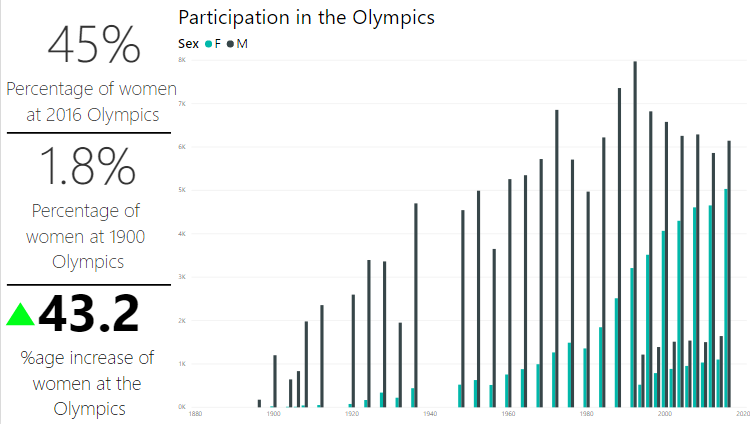
Participation of women started off at a paltry 1.8% at the turn of the 20th century. However, there has been a steady, almost linear increase in the participation of women ever since, edging very slowly to the golden 50% mark. The average increase in women participation, quad-on-quad is currently at 0.1% .
Which countries have the most balanced teams ?
Looking at the history of the teams fielded by different countries might also give us a feel of how balanced teams from different parts of the world are. Straight off the bat, I expect more liberal countries and those that promote more gender equity to field more women as compare to conservative countries.
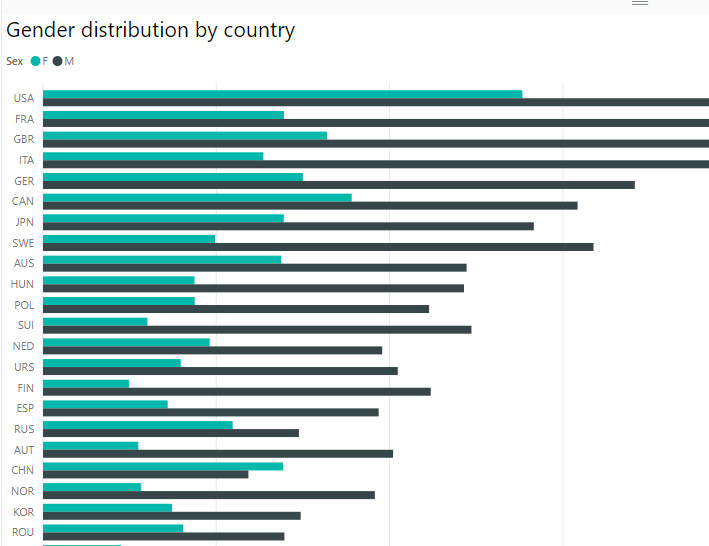
What we see however, is that while they have fielded more players throughout the history of the Olympics, their teams did not begin as very balanced. In this category, we have a strange winner. China. Among all teams that have fielded more than 500 olympians, China is the only team that has fielded more women than men ! Looking closely at China’s participation at the Olympics, we see that they didn’t participate much before 1984, fielding only 111 competitors in all that time due to reasons explained here. However, they picked it up and with a whole lot of vigour.
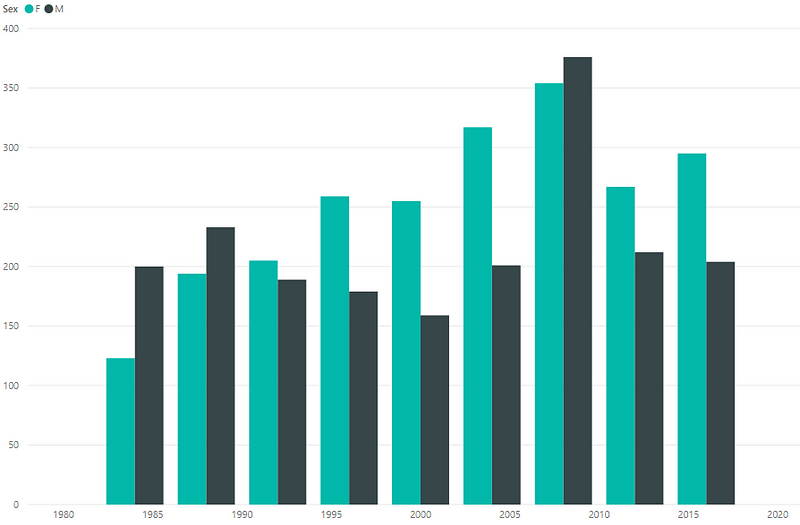
As can be observed, China’s women are definitely leading the way when it comes to the Olympics. Only thrice since 1984 has China fielded more men(’84, ’88 and 2008)
Looking at the sports that China participates in might be why. Some sports are gender exclusive, such as synchronised swimming and rhythmic gymnastics.
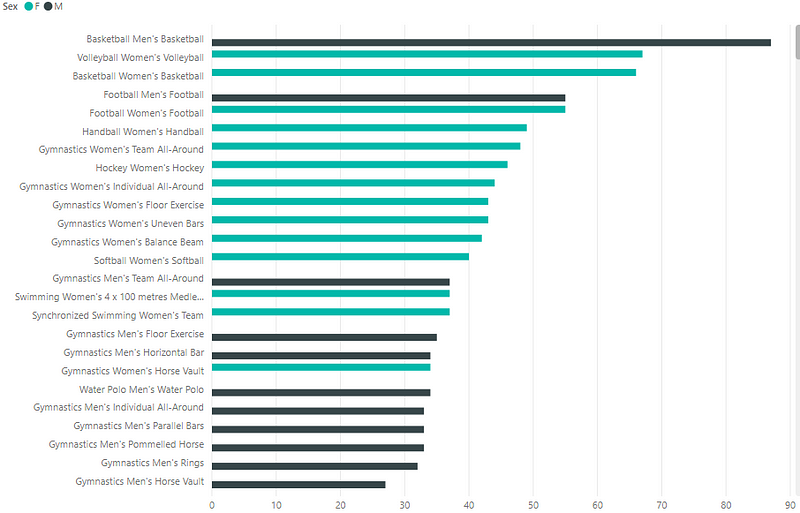
As we see, China’s women exploit the individual gymnastics events to field a more feminine team. They however put up a fierce fight in the gender neutral sports as well. The One-Child Policy seems to be working in reverse when it comes to the Olympics.
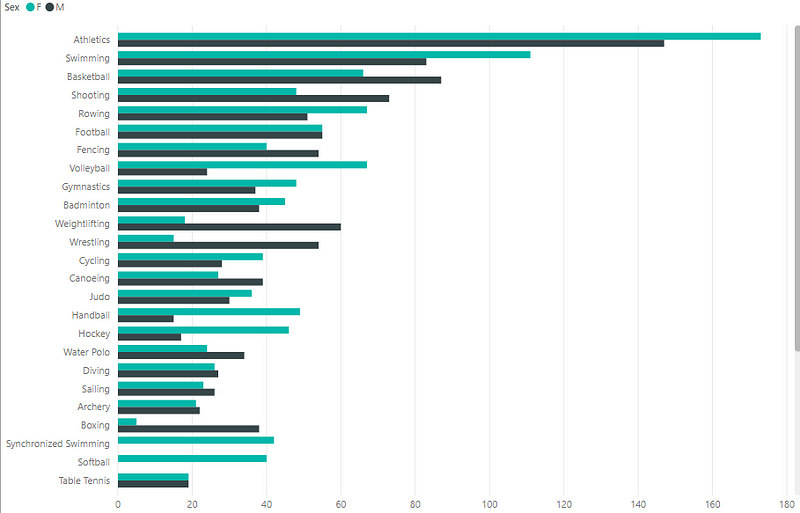
A wider look at distribution in the different sports
Across the most popular sports, we see a wide imbalance, expected due to the uneven participation in past years.
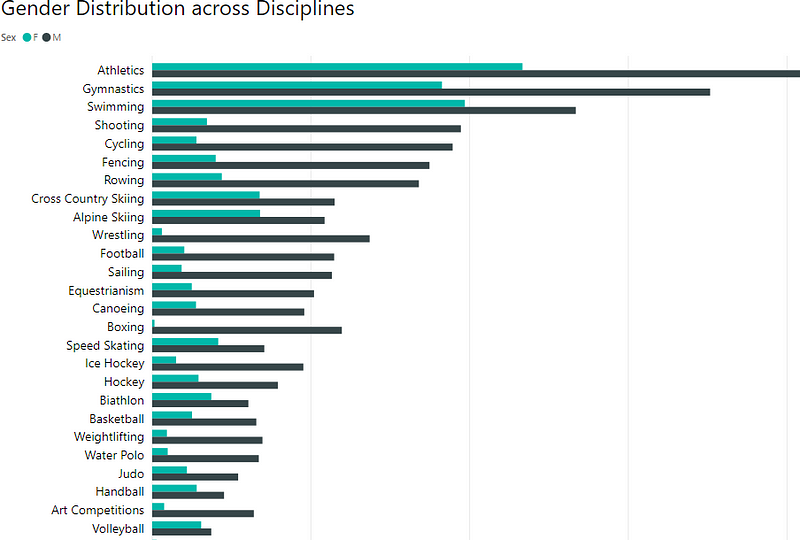
Sports like Voleyball, Figure Skating,Table Tennis, however manage to attract a decent percentage of women and a fair balance as well.
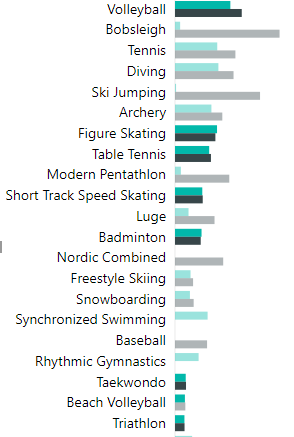
While not yet at optimum, we expect a more balanced Olympics in the years to come judging by our first graph.
One thing is for sure. These charts will get way more colorful when the gender fluid community finally get their tags.